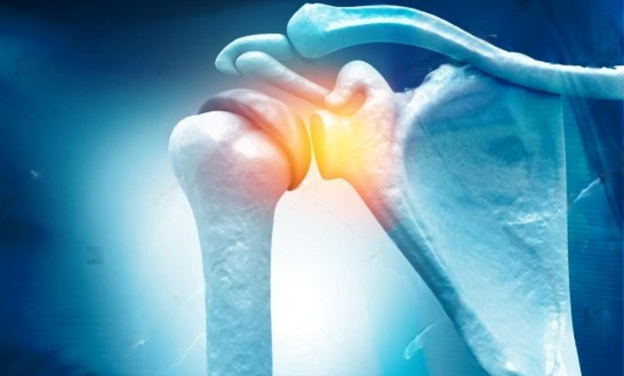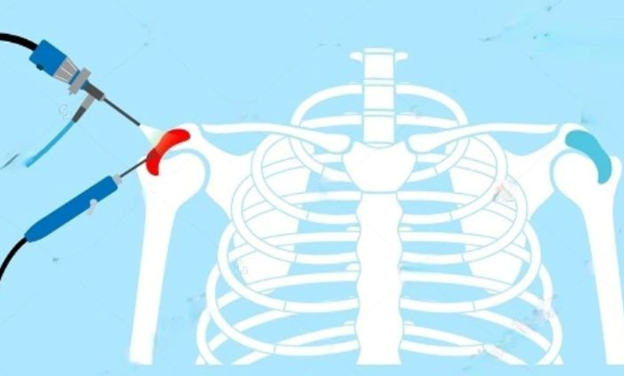Dr. rahul khanna
M.S. (ORTHO), FIASM, FIA
Specialist Joint Replacement, Arthroscopy & Sports Injury
Menu
Dr. rahul khanna
M.S. (ORTHO), FIASM, FIA
Specialist Joint Replacement, Arthroscopy & Sports Injury
Menu
Innovation in Rotator Cuff Repair: The Latest Techniques
An essential part of the shoulder that provides stability and mobility is the rotator cuff. Rotator cuff injuries can have a major effect on everyday activities and quality of life. Thankfully, new developments in medical technology have produced creative rotator cuff restoration methods that provide patients with better results and quicker recovery periods. We’ll look at some of the most recent advancements in rotator cuff repair methods in this blog.

Here the latest techniques include:
Arthroscopic Rotator Cuff Repair
Arthroscopic surgery has revolutionized the treatment of rotator cuff tears. It is a less intrusive and quicker recovery procedure, causing less tissue damage. The surgeon makes small incisions around the shoulder to insert a tiny camera called an arthroscope and specialized tools. This allows them to view and repair the damaged tissue. Compared to traditional open surgery, arthroscopic surgery reduces the risk of complications and enables patients to return to their routine activities sooner.
Double-Row Repair
Double-row repair has become increasingly popular in recent years as a means of enhancing the stability and strength of rotator cuff repairs. This technique involves suturing the rotator cuff tendon in both the anterior and posterior rows, resulting in a more secure attachment to the bone. Studies have suggested that using double-row repair instead of single-row procedures leads to faster healing of the repaired tendon and greater structural integrity
Biological Augmentation
Biological augmentation is the use of biological agents like mesenchymal cells or platelet-rich plasma (PRP) to enhance the healing process of rotator cuff repairs. These biological substances contain growth factors and cytokines that facilitate tissue regeneration and speed up the healing process. By incorporating biological augmentation into traditional surgical procedures, surgeons can potentially improve outcomes and reduce the risk of retears.
Tendon Transfer
A tendon transfer may be taken into consideration as a reconstructive option if the rotator cuff tear is badly damaged or irreversible. To restore stability and function to the shoulder joint, a healthy tendon from another area of the body, such as the pectoralis major or the dorsal latissimus dorsi is relocated and joined to the humorous during a tendon transfer procedure. Even though tendon transfer is a more involved surgical procedure, patients with severe rotator cuff problems may benefit greatly from it. Ready to explore the latest innovations in rotator cuff repair? Schedule a consultation with Dr. Rahul Khanna today and take the first step toward a stronger, healthier shoulder!
Reverse Total Shoulder Arthroplasty
Patients who suffer from significant rotator cuff tears and related arthritis may find relief through a surgical procedure known as reverse total shoulder arthroplasty (RTSA). Unlike traditional shoulder replacement surgery, which relies on the stability of the rotator cuff muscles, RTSA utilizes a ball-and-socket arrangement to compensate for the loss of rotator cuff function. By modifying the position of the shoulder joint’s center of rotation, this innovative technique allows the deltoid and other muscles to provide stability and movement. Patients with complex rotator cuff disease have shown significant improvement in function and pain reduction with RTSA.

Providing patients with better Techniques
Shoulder surgery has progressed due to advancements in rotator cuff restoration techniques, providing patients with better results and quicker recovery. Orthopedic surgeons now have a range of tools to treat various rotator cuff ailments, including biologic augmentation, minimally invasive procedures, and advanced reconstructive possibilities. The goal remains the same: to restore function and quality of life to patients with rotator cuff disease.
Ready to explore the latest innovations in rotator cuff repair? Schedule a consultation with Dr. Rahul Khanna today and take the first step toward a stronger, healthier shoulder!
Emergency?
24 Hour Ready
Call Us for Emergency
+91-9828501360
Book an Appointment
Seamless Fitness Care Access: Booking an Appointment with Your
Trusted Doctor